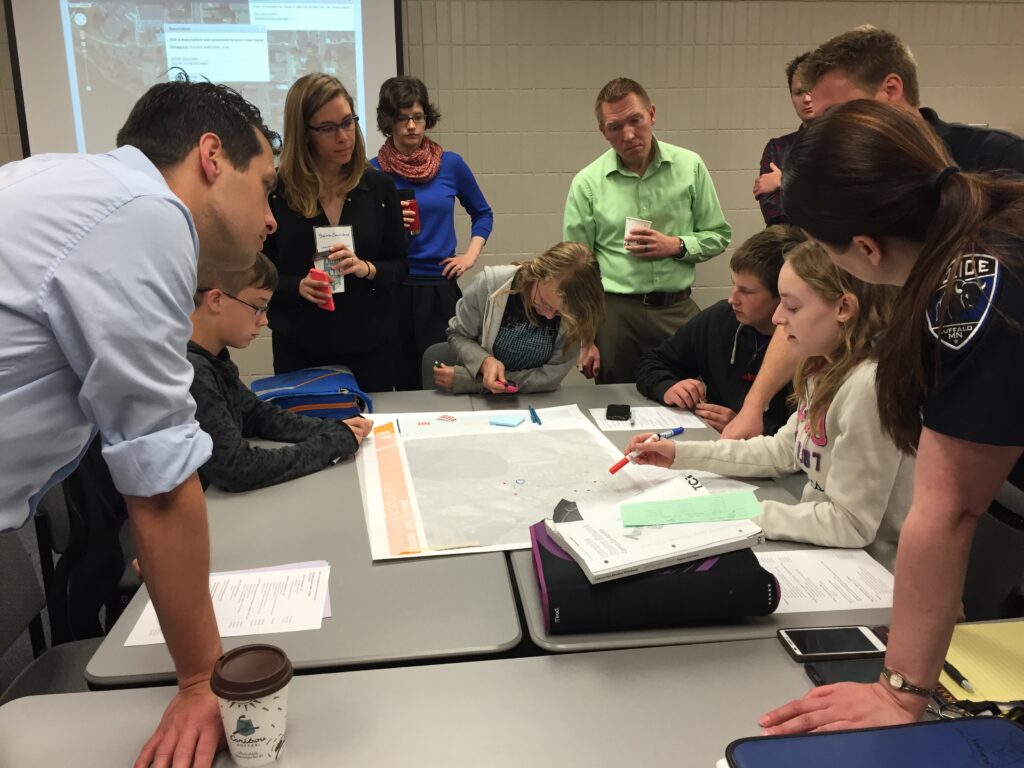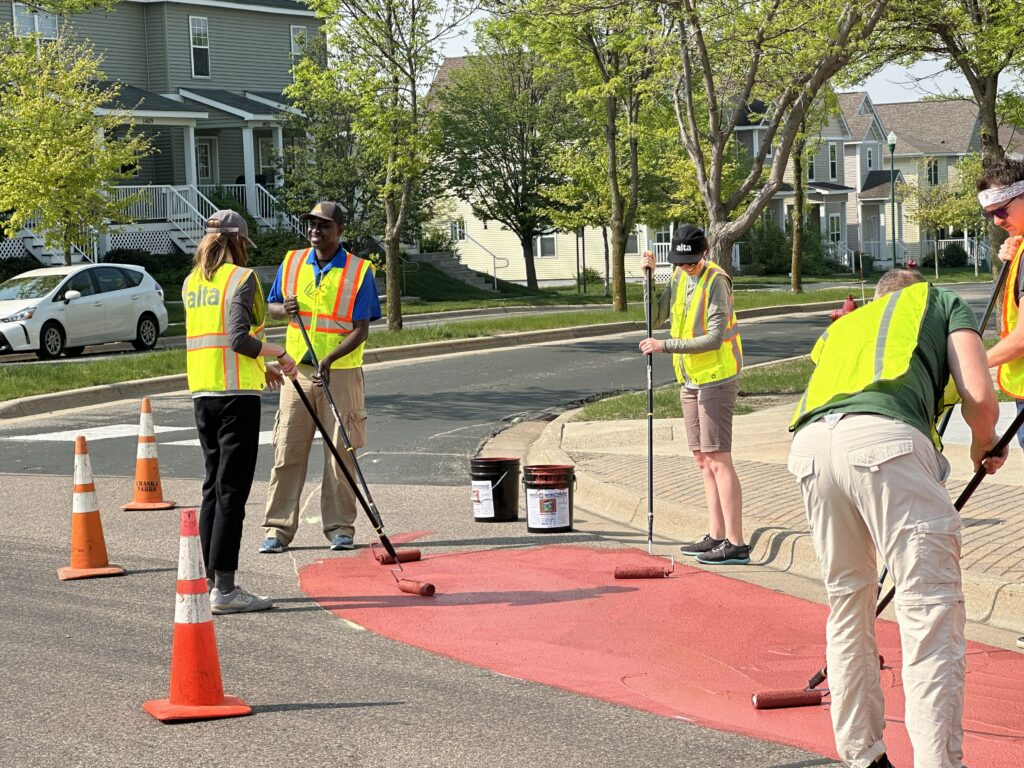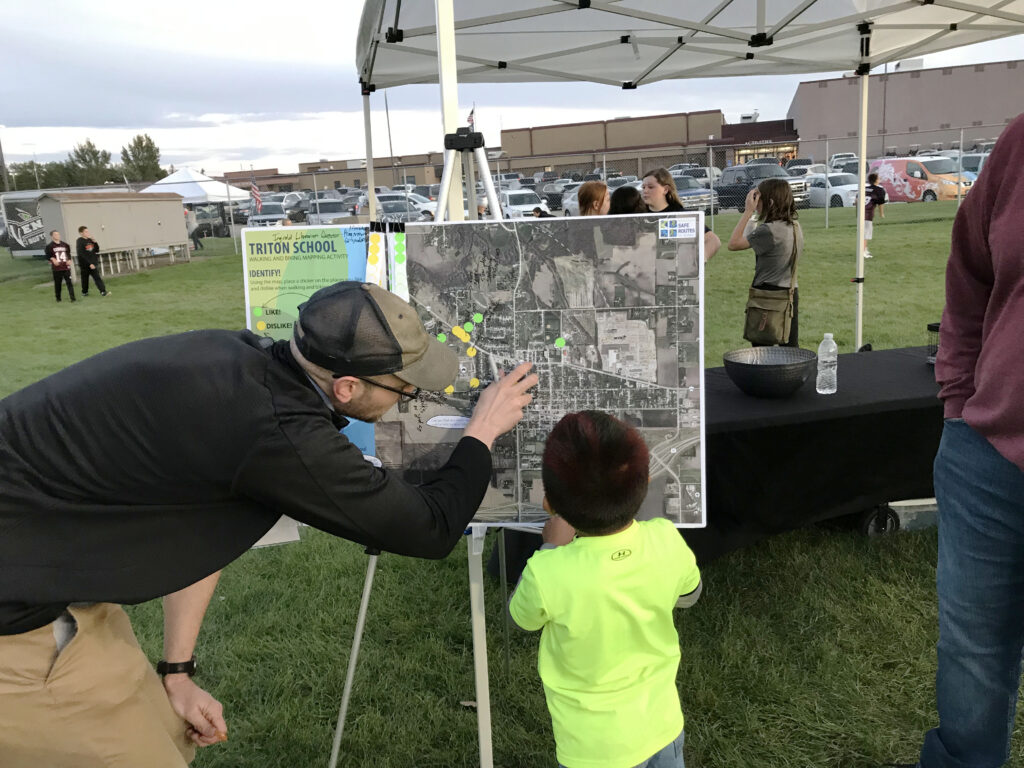Getting Started for Local Government
Local government support is essential for securing funding, implementing infrastructure projects, and leading enforcement efforts. Governments can also enact policies that encourage walking and biking.
Elected Officials
- Participate in and attract media to Walk and Bike to School Day events
- Assign staff to work on Safe Routes to School
- Approve local funding for Safe Routes to School
- Adopt policies that support Safe Routes to School
Parks and Recreation Staff
- Provide insights about how to integrate trails and parks into bicycling and walking routes for students
- Assist with bike rodeos or other educational events by providing instructors, equipment or event space
- Consider a “Story Stroll” to give students and families an activity to do while they walk trails throughout the community and stop to read pages along the way.
Law Enforcement
- Train school crossing guards
- Issue tickets for moving violations in school zones
- Assist with bicycle and pedestrian safety education
Local Planners
- Create maps showing the safest routes around schools with bicycling and walking infrastructure
- Conduct infrastructure assessments
- Apply professional knowledge of land-use issues to master planning process and school siting decisions
- Review development site plans to ensure pedestrian and bicycle access is provided
Public Health Professionals
- Provide resources and giveaway items
- Help with cross-promotion at events
- Educate students and adults on the importance of physical activity and injury prevention
Public Works
- Maintain safe walking and bicycling facilities by sweeping, snow plowing and making repairs
- Construct new sidewalks and stripe crosswalks and bike lanes
- Participate in master planning processes and school siting decisions
Transportation Engineers
- Provide information about vehicle speeds and volumes near schools
- Conduct speed studies and infrastructure assessments
- Design bicycle and pedestrian facilities
- Approve changes to the transportation network


